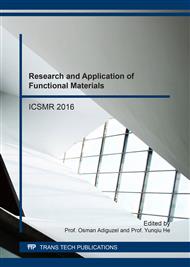p.105
p.110
p.116
p.121
p.127
p.133
p.137
p.141
p.146
Performance of Electrical Discharge Milling and Sinking in Micro Graphite Powder Mixed Dielectric
Abstract:
Electrical discharge machining (EDM) is a non-conventional machining technique that is well-known for use in fabricating dies and molds owing to machinability of high hardness materials. Although the electro-thermal mechanism of EDM offers many advantages over other available machining methods, its sluggish nature limits the wide application of such machines for mass production. In this research, adding graphite powder to dielectric is proposed to improve EDM performance factors. Material removal rate (MRR) and average surface roughness (Ra) have been monitored and evaluated after addition of graphite powder to dielectric in electrical discharge milling and sinking. It is found that the presence of powder particles in dielectric fluid enhances the MRR steadily up to ~11 and ~17% for milling and sinking process, respectively. Moreover, the highest enhancement if Ra is ~31% at 1g/l graphite powder concentration for electrical discharge milling and up to ~11% for sinking process. Field emission scanning electron microscopy (FESEM) is used to inspect the machined surfaces. The surfaces machined with graphite powder mixed appear significantly unlike the surfaces machined in pure dielectric. Adding powder to dielectric is found to increase the machined surface hardness by ~26%, from 240 to 302 HV.
Info:
Periodical:
Pages:
127-130
Citation:
Online since:
July 2017
Authors:
Price:
Сopyright:
© 2017 Trans Tech Publications Ltd. All Rights Reserved
Share:
Citation:


